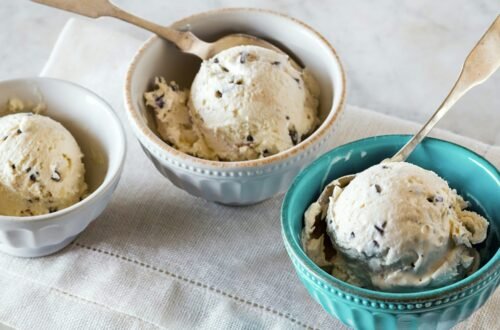Mannacote is one of those rare terms that sparks curiosity the moment you hear it. Is it a pasta dish? A nutritional supplement? A fertilizer? Surprisingly, the answer is “all of the above.” Over the years, “mannacote” has taken on different meanings in culinary, wellness, and gardening communities. Originally surfacing as a common mispronunciation or affectionate twist on the Italian word “manicotti,” mannacote has since been adopted across multiple domains with surprising versatility. This article unpacks the full story of mannacote—how it began, what it means in different industries, and why it’s gaining popularity. Whether you’re here for the food, the garden, or your health, you’re about to discover why mannacote is more than just a word—it’s a movement.
What Is Mannacote? – A Word with Many Lives
The word “mannacote” doesn’t appear in traditional dictionaries or culinary textbooks, yet it’s widely understood in many communities. At its core, it is a phonetic or regional variation of the Italian-American pasta dish called manicotti—tube-shaped pasta filled with cheese, meat, and sauce. But interestingly, mannacote has grown to represent more than just food.
In health and wellness circles, it is being marketed as a powerful dietary supplement containing collagen, vitamins, and adaptogens. In gardening, mannacote refers to an organic, slow-release fertilizer used to enrich soil naturally. This linguistic evolution shows how a simple mispronounced dish name grew into something that now serves three entirely different purposes—each valid and valuable in its own right. This article explores all these meanings in full detail to give you a complete understanding of the mannacote’s phenomenon.
Mannacote as Comfort Food – Misnamed, But Delicious
Origins of the Term “Mannacote”
The term mannacote has its roots in Italian-American households where regional accents, dialects, and generational shifts in language led to charming mispronunciations of traditional dishes. “Manicotti,” which means “little sleeves” in Italian, became mannacote in homes across parts of the United States. Much like “gabagool” for capicola or “mutzadell” for mozzarella, mannacote’s is an affectionate twist born from immigrant families trying to preserve culture while adapting to a new language. It’s not an “incorrect” word—rather, it’s a cultural artifact, a verbal keepsake that reflects how food and identity evolve across time and place. Today, it’s commonly used in family kitchens and even some local restaurants, passed down like a beloved family recipe.
Traditional Mannacote Recipe (aka Manicotti)
At its heart, mannacote refers to a dish that is rich, comforting, and deeply satisfying. The traditional recipe starts with large tubular pasta shells—often manicotti noodles or crepes—that are filled with a mixture of cheeses such as ricotta, mozzarella, and parmesan. Some families add ground beef, sausage, or spinach to create a more hearty filling. Once filled, the pasta is placed in a baking dish and covered in either marinara sauce or béchamel, sometimes both. A generous topping of shredded cheese is added, and the whole dish is baked until golden and bubbling. This isn’t fast food—it’s comfort food, perfect for family dinners and holiday gatherings.
How to Make Mannacote – Step-by-Step
To make mannacote from scratch, begin by preparing the pasta tubes, either by boiling store-bought manicotti or making your own crepes using eggs, flour, and milk. Once the pasta is ready, mix the filling using ricotta cheese, mozzarella, parmesan, fresh basil, and black pepper. Add cooked ground meat or spinach if desired. Carefully stuff the shells using a spoon or piping bag. Grease a baking dish and spread a layer of marinara or béchamel on the bottom. Lay the stuffed shells on top, cover with more sauce and shredded cheese. Cover with foil and bake at 375°F for about 25–30 minutes. Remove the foil toward the end for a golden crust. Let the dish rest before serving to enhance flavor and texture.
Mannacote vs. Manicotti vs. Cannelloni
While mannacote and manicotti are often used interchangeably in the U.S., it’s helpful to understand their distinctions. Manicotti typically refers to large, ridged pasta tubes that are boiled and filled. Cannelloni, more common in Italy, uses fresh pasta sheets rolled around the filling. Mannacote is not a different dish—it’s a colloquial name for manicotti, often used affectionately. The core components are the same: pasta, filling, sauce, and cheese. The difference lies in terminology and regional technique.
Mannacote in American Kitchens – Culinary Evolution
Why the Word “Mannacote” Is Trending
In recent years, the word mannacote has gained popularity on social media, food blogs, and YouTube cooking channels. Many people search for it after hearing it from relatives or during holidays. Some remember the dish from childhood, but didn’t realize the name had evolved. Google Trends data shows spikes around Thanksgiving, Christmas, and Easter, underscoring its emotional and cultural relevance. This kind of organic virality, rooted in memory and tradition, makes mannacote’s a fascinating case study in culinary linguistics.
The Emotional Power of Food Mispronunciations
Using mannacote instead of manicotti is more than a slip of the tongue—it’s a symbol of cultural identity. Just as people say “gravy” instead of tomato sauce or “brazhoot” for prosciutto, these quirks reflect family history and belonging. Mannacote is a linguistic fingerprint, reminding us that food is not just taste—it’s memory, heritage, and emotion. Often, it’s in these imperfect pronunciations that we find the deepest love.
Mannacote as a Cooking Aid – The Mystery Product
Is There a Product Called Mannacote’s?
In culinary innovation spaces, mannacote is emerging as a concept for a cooking aid or baking enhancer for pasta dishes. Imagine a product that prevents shells from cracking or fillings from leaking during baking. While no major brands currently market such a product under this name, the idea of mannacote’s as a stabilizing powder or binder is beginning to circulate among pasta enthusiasts.
How It Works in Pasta Dishes
This theoretical mannacote product would use light starches, emulsifiers, and herbs to preserve texture and moisture in baked pasta dishes. It could revolutionize cooking by solving common issues like soggy pasta, sauce pooling, or uneven filling distribution. One day, it might become a staple in boxed pasta kits or gourmet cooking stores, giving home chefs professional-level results.
Mannacote as Natural Fertilizer – Gardeners’ Secret Weapon
What Is Mannacote in Gardening?
In gardening, mannacote refers to a slow-release organic fertilizer, typically available in granule or capsule form. It is made from composted materials, natural minerals, and beneficial microbes. This version of mannacote’s is eco-friendly, aimed at improving soil health and promoting sustainable agriculture.
How It Works
Mannacote fertilizer works by releasing nutrients gradually, rather than all at once. This ensures consistent feeding for plants and prevents nutrient runoff into waterways. It enhances root development, supports microbial ecosystems, and results in healthier, more resilient crops.
Environmental and Health Benefits
Using mannacote fertilizer reduces reliance on synthetic chemicals, making it safer for the environment and human health. Produce grown with this organic input tends to have higher nutritional value and lower toxin exposure. For gardeners who value sustainability and clean living, mannacote’s is the perfect natural solution.
Mannacote in the Wellness World – A Holistic Supplement
What’s in a Supplement Called Mannacote?
In the wellness industry, mannacote is appearing as a liquid or gel supplement combining collagen, B vitamins, adaptogens, antioxidants, and omega-3s. Marketed as a multi-benefit health booster, it appeals to people looking for energy, immunity, skin health, and stress relief in one product.
Health Benefits
Mannacote supplements provide:
- Collagen for skin, joints, and nails
- Amino acids for muscle recovery
- Adaptogens (like ashwagandha) for stress
- Vitamins for energy and immune support
- Omega-3s for heart and brain function
This makes mannacote’s a comprehensive wellness solution for modern lifestyles.
How to Use It
Mannacote is often taken in the morning for sustained energy. It can be consumed by spoon, mixed into smoothies, or stirred into yogurt or oatmeal. Its smooth texture and mild flavor make it palatable and convenient for daily use.
Mannacote vs. Traditional Supplements
What sets mannacote apart is its high bioavailability—meaning it’s absorbed more effectively than pills. It’s portable, usually packaged in sachets, and eliminates the need for multiple bottles. For health-conscious consumers, it’s an appealing all-in-one solution.
Cultural and Semantic Power of Mannacote
A Case Study in Language Evolution
The journey from “manicotti” to “mannacote” showcases how language evolves through culture, adaptation, and creativity. What started as a mispronunciation grew into a multi-industry term with culinary, wellness, and agricultural significance. This linguistic flexibility is what gives mannacote’s its enduring power.
Why Made-Up Words Succeed in Branding
Mannacote is a branding dream—it’s unique, easy to say, and emotionally charged. It conveys family, tradition, innovation, and well-being all at once. That’s why it’s succeeding not just as a word, but as a cross-market concept.
Final Thoughts
From the dinner table to the garden and the health aisle, mannacote shows that one word can carry multiple meanings, all deeply relevant. Whether it evokes memories of a bubbling pasta dish, energizes your day through a nutritional supplement, or nourishes your garden through natural fertilizer, mannacote is a symbol of transformation, heritage, and innovation. It reminds us that language is living, food is memory, and health is holistic. So the next time you hear the word mannacote‘s, don’t just think of what it is—think of what it can become.
FAQs
1. What is mannacote?
Mannacote is a term that can refer to a baked pasta dish, a natural fertilizer, or a wellness supplement, depending on context.
2. Is mannacote’s the same as manicotti?
Yes, mannacote’s is often a mispronunciation or nickname for manicotti, a traditional stuffed pasta dish.
3. Can mannacote’s be used as a fertilizer?
Yes, mannacote’s is also a slow-release organic fertilizer used in sustainable gardening.
4. Is there a mannacote’s health supplement?
Yes, it exists as a multi-nutrient supplement containing collagen, vitamins, and adaptogens for total-body wellness.
5. How do you make mannacote’s pasta at home?
Stuff pasta tubes with cheese, meat, and herbs, cover in sauce, and bake at 375°F until golden and bubbly.


